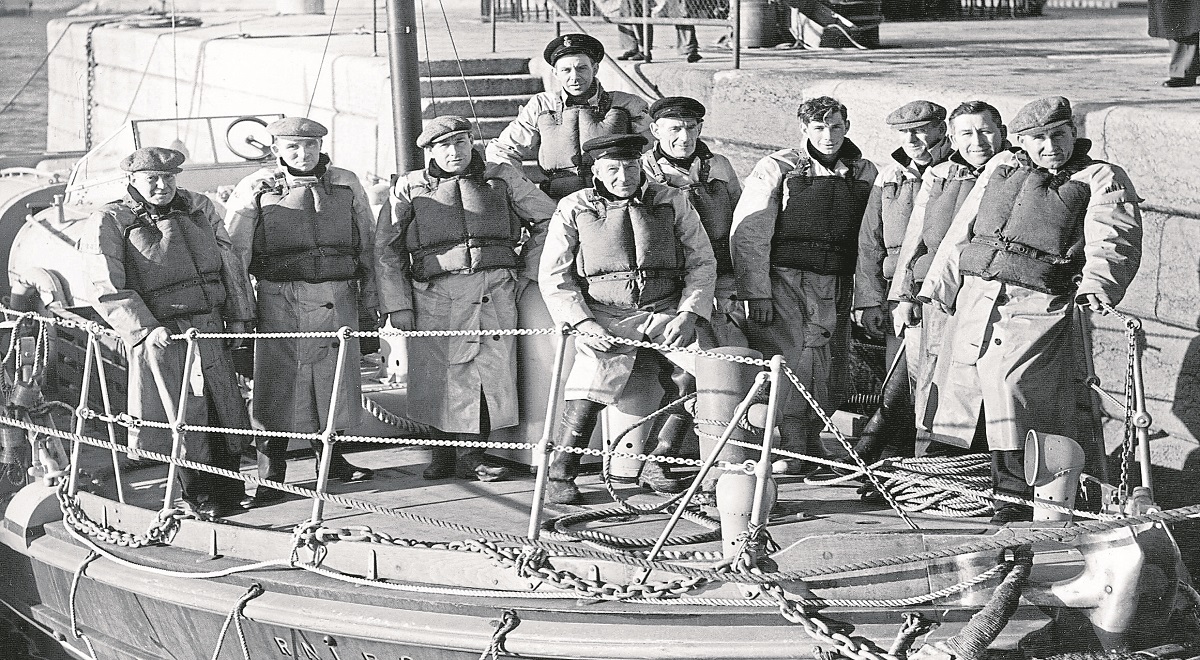A MOVING scene was witnessed in Omagh 70 years ago last week when a man who died in the Princess Victoria shipping disaster was laid to rest in the town.
The funeral of Sergeant James Sumner, Royal Inniskilling Fusiliers, took place at Sacred Heart Church, officiated by Rev M Shiels.
Deceased, a widower, was well-known in local football circles and a father of four children.
A UH report at the time stated that ‘a moving scene was witnessed as sergeants from the regular and territorial army bore the coffin of their former colleague from the church. They were preceded by a regimental piper playing a lament’.
The Stranraer-Larne ferry MV Princess Victoria sank on January 31, 1953, with the loss of more than 130 lives in one of the worst maritime disasters on British seas.
The huge loss of life was felt deeply in both Scotland and Northern Ireland, with the wife of Omagh man, James Gunn, also listed among those missing.
Another local connection to those who perished when the ship sank was Patrick McLaughlin, a native of Omagh who by the early 1950s was married and living in Dungloe, Co Donegal.
A father of three children, he had left Stranraer on Monday, January 26 with a view to taking employment in England. However, he was said to have changed his mind and decided to return to Belfast for another job.
There was also a Ballygawley connection, where sympathy was extended to Mr R Robb, principal of the local primary school, who was bereaved by the loss of his brother-in-law, James Lawther of Belfast.
The car ferry was hit by a raging storm whose violent waves were to toss it helplessly around the sea until, despite the best efforts of its crew, it sank with the loss of 133 lives.
Only 44 people were saved, all of them adult males. None of the women and children on board survived. It is thought that they had all been in one lifeboat which was hit by a wave and thrown against the side of the ship just before it sank. There were 32 women – three of them crew members – listed among the dead. There were four small boys on board, travelling with their parents, all of whom also perished.
The most prominent name among the dead was Maynard Sinclair, the deputy prime minister of Northern Ireland, and Sir Walter Smiles, a Unionist MP who was returning home from Westminster.
Other passengers, some returning home, some travelling on business or for leisure were from several different parts of Britain and Northern Ireland.
The ship had set off from Larne on that fateful morning just before 8am.
A huge storm was already raging across most of the UK but the decision was made to set sail.
The first request for assistance from the ship’s captain, James Ferguson, was transmitted at 9.45am. The words did not indicate that the ship was in any immediate danger of sinking: “Hove to off mouth of Loch Ryan. Vessel not under command. Urgent assistance of tug required”.
The weather may have resulted in the Princess Victoria altering her course, in line with procedures followed by ferries in northerly and north westerly wind conditions. It appears that the Captain Ferguson decided to return to Loch Ryan due to the extreme weather.
Unfortunately, huge waves burst the stern doors and flooded the car deck. Crew tried to close the doors but they were too badly damaged and water continued to flood the ship. As a result, it was impossible to return to the shelter of Loch Ryan. Captain Ferguson made the difficult decision to proceed to Northern Ireland, and hoped for safety.
However, just after 10.30am an SOS was sent as the ship was now in immediate danger, ‘Princess Victoria four miles north west of Corsewall. Car deck flooded. Heavy list to starboard. Require immediate assistance. Ship not under command.’
At 12.52pm the starboard engine room was flooded and at 1.15pm the message was received, ‘We are preparing to abandon ship’.
Captain JFerguson is reported to have stood at salute on the bridge as the ship went down five miles off the Co Down coast. He was posthumously awarded the George Medal.
The adverse weather conditions hampered the rescue and caused confusion regarding the location of the Princess Victoria.
On receiving the initial SOS, the Jeanie Spiers lifeboat was dispatched from Portpatrick, alongside the HMS Contest. However poor visibility prevented them from seeing the Princess Victoria.
It wasn’t until 1.35pms when the new position of the ship was transmitted that the rescue attempt was able to focus its efforts. Four merchant ships located in Belfast Lough set out immediately.
The horrendous conditions prevented the assisting ships from rescuing survivors in lifeboats, due to the danger of dashing them against the sides of the large vessels. Instead they provided shelter from the raging sea, until the Sir Samuel Kelly lifeboat from Donaghadee arrived. At 3.30pm the RAF Hastings arrived at the scene, dropping equipment to survivors and guiding the British destroyer, HMS Contest to the scene.
The Donaghadee lifeboat, Sir Samuel Kelly, rescued 33 of the 44 survivors from the wreck and brought in many bodies on the following day.
Annual commemorations to the disaster are still held in Larne and Donaghadee and there are also memorials in Larne, Stranraer and Donaghadee.







